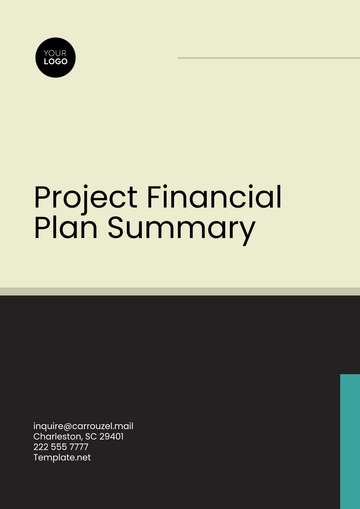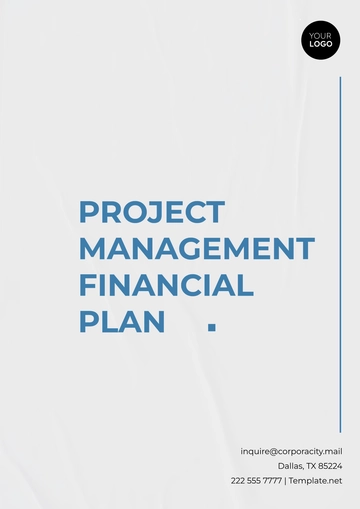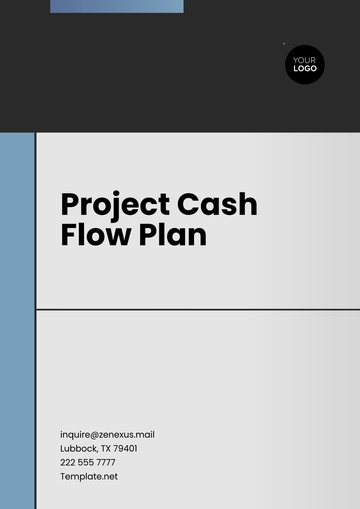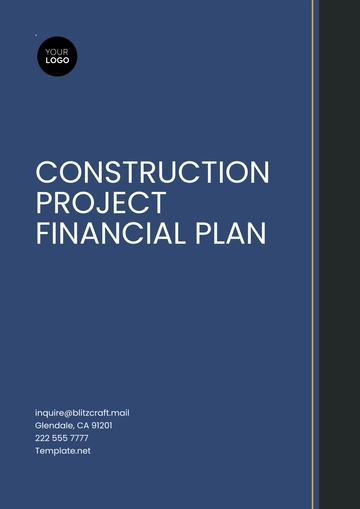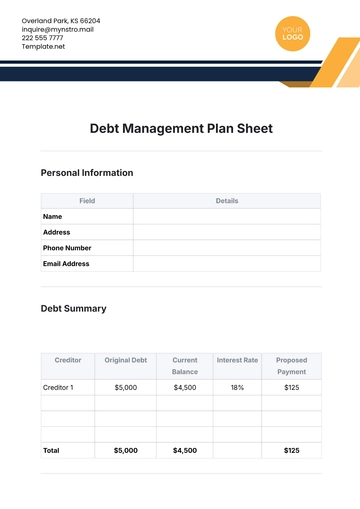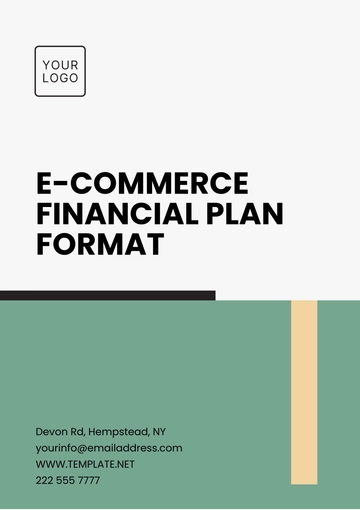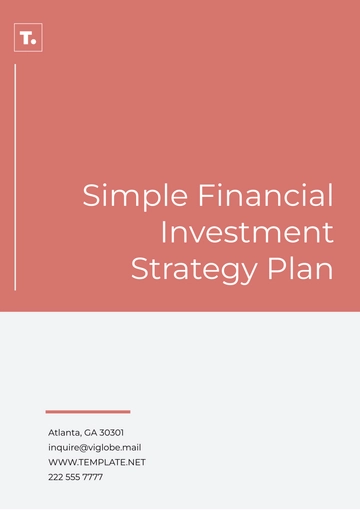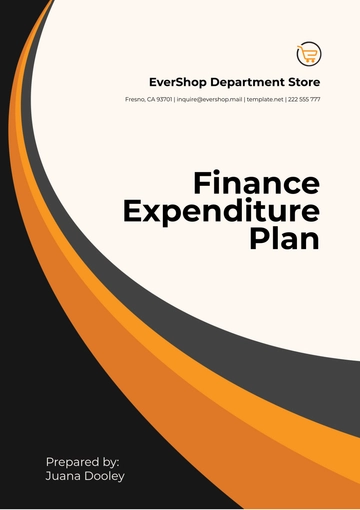Agency Financial Plan
Written by: [Your Name]
I. Executive Summary
[Your Company Name] presents this comprehensive financial plan to provide an overview of the agency's financial health, strategies, and projections. This plan outlines [Your Company Name]'s goals, key financial metrics, budget allocations, revenue forecasts, financial analysis, implementation plan, monitoring, and evaluation.
II. Company Overview
Company Name: [Your Company Name]
Company Number: [Your Company Number]
Company Address: [Your Company Address]
Company Website: [Your Company Website]
Company Social Media: [Your Company Social Media]
[Your Company Name] is a leading agency specializing in digital marketing, social media management, and branding services. With a commitment to excellence and innovation, we strive to deliver exceptional results for our clients.
III. Financial Goals
[Your Company Name] aims to achieve the following financial goals:
Increase Revenue: Implement strategies to grow annual revenue by 15% over the next 5 years.
Cost Optimization: Identify opportunities to streamline expenses and improve operational efficiency, aiming for a 10% reduction in costs within the next 3 years.
Profit Margin Expansion: Enhance profitability by improving profit margins by 20% through strategic pricing and resource utilization by 2055.
IV. Financial Analysis and Forecasts
A. Revenue Analysis
Revenue Growth Rate: 15% (CAGR)
Revenue Composition: 70% from digital marketing services, 20% from social media management, 10% from branding services
B. Expense Analysis
C. Profitability Analysis
D. Financial Forecasts
Income Statement Forecast
Year | Revenue (USD) | Expenses (USD) | Net Profit (USD) |
|---|
2050 | $2,000,000 | $1,200,000 | $800,000 |
2051 | $2,300,000 | $1,350,000 | $950,000 |
2052 | $2,600,000 | $1,400,000 | $1,200,000 |
2053 | $2,900,000 | $1,450,000 | $1,450,000 |
Cash Flow Forecast
Year | Cash Inflows (USD) | Cash Outflows (USD) | Net Cash Flow (USD) |
|---|
2050 | $2,100,000 | $1,000,000 | $1,100,000 |
2051 | $2,400,000 | $1,200,000 | $1,200,000 |
2052 | $2,700,000 | $1,300,000 | $1,400,000 |
2053 | $3,000,000 | $1,400,000 | $1,600,000 |
V. Implementation Plan
A. Strategic Initiatives
Market Expansion: Expand into emerging markets in Asia-Pacific and Latin America.
Product Diversification: Introduce new service packages catering to small businesses.
Operational Efficiency: Implement automation tools to streamline internal processes.
Customer Acquisition: Launch targeted advertising campaigns to attract new clients.
B. Action Steps
Quarter 1: Conduct market research and identify target markets.
Quarter 2: Develop new service packages and pricing models.
Quarter 3: Implement automation tools and train staff on new processes.
Quarter 4: Launch advertising campaigns and monitor customer acquisition metrics.
VI. Monitoring and Evaluation
A. Key Performance Indicators (KPIs)
Revenue Growth Rate: Target a 15% increase annually.
Cost-to-Income Ratio: Maintain below 60%.
Customer Acquisition Cost (CAC): Reduce by 10% over the next 2 years.
B. Evaluation Process
Regular Reviews: Conduct quarterly reviews of financial performance against targets.
Comparative Analysis: Compare actual financial results with forecasted figures to identify variances.
Feedback Mechanisms: Solicit feedback from key stakeholders to assess the effectiveness of implemented strategies.
Adjustment and Adaptation: Based on evaluations, make necessary adjustments to strategies and implementation plans to ensure alignment with financial goals.
VII. Risk Management
[Your Company Name] acknowledges the following risks and has developed strategies to mitigate them:
Market Fluctuations: Implement diversification strategies to reduce exposure to market volatility.
Competitive Landscape: Continuously monitor competitors and adjust marketing and pricing strategies accordingly.
Regulatory Changes: Stay informed about industry regulations and adapt policies and procedures accordingly.
Cybersecurity Threats: Invest in robust cybersecurity measures to protect sensitive data and systems from cyber threats.
VIII. Conclusion
This financial plan outlines [Your Company Name]'s roadmap for achieving financial success and sustainable growth. By leveraging strategic initiatives, optimizing resources, and managing risks effectively, [Your Company Name] is poised for a prosperous future in the digital marketing industry.
Plan Templates @ Template.net


